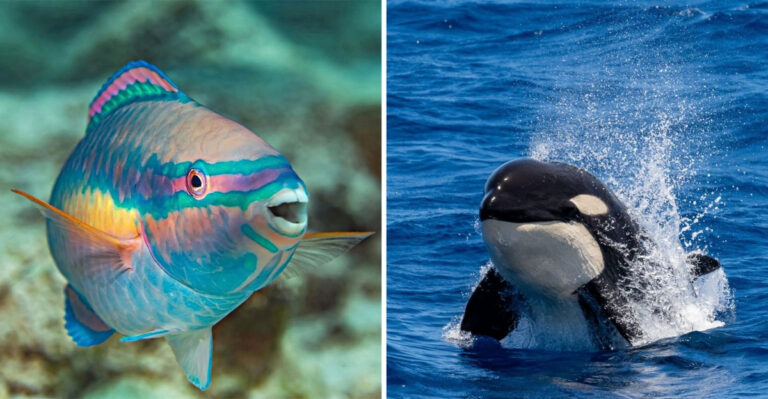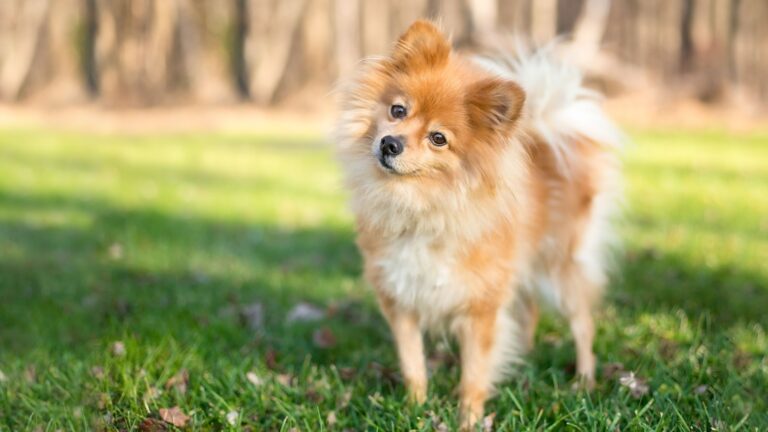10 Rare Cat Colors And Patterns (Plus 5 Mesmerizing Cat Eye Colors That Captivate Instantly)
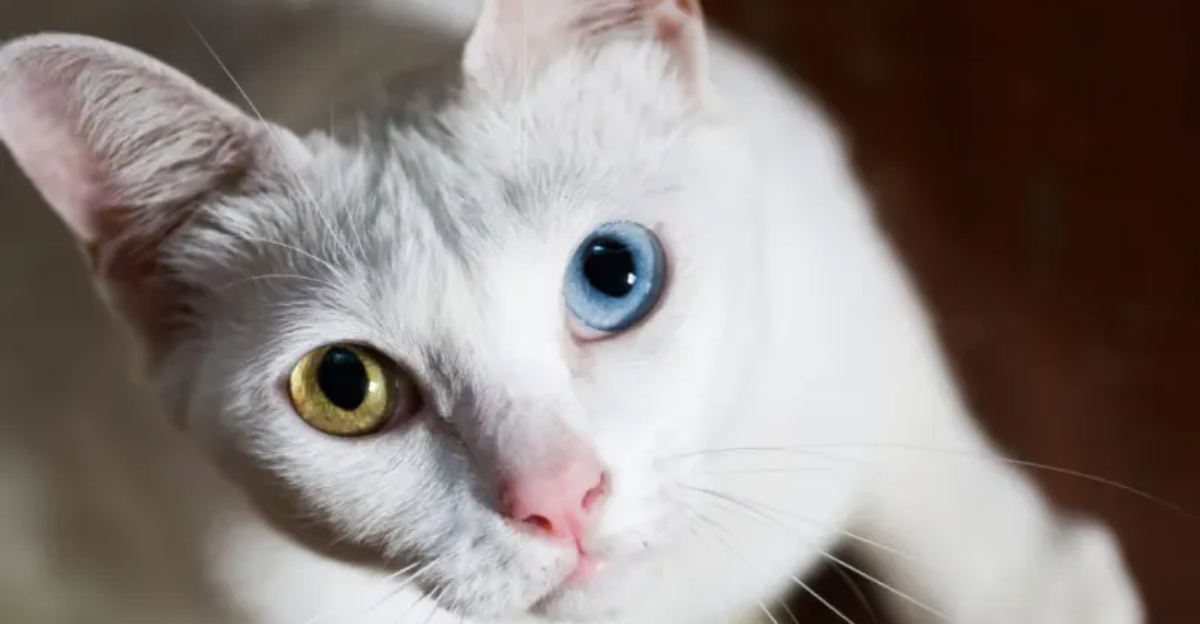
Cats come in a stunning array of colors and patterns that can leave any pet lover speechless. While tabby cats and black cats are common sights in many homes, some feline friends sport coats and eyes so rare they might stop you in your tracks.
These genetic marvels showcase nature’s artistic side, creating living masterpieces that cat enthusiasts treasure.
Ready to discover some of the most extraordinary feline features that make certain cats truly one-of-a-kind?
1. The Mystical Smoke Cat
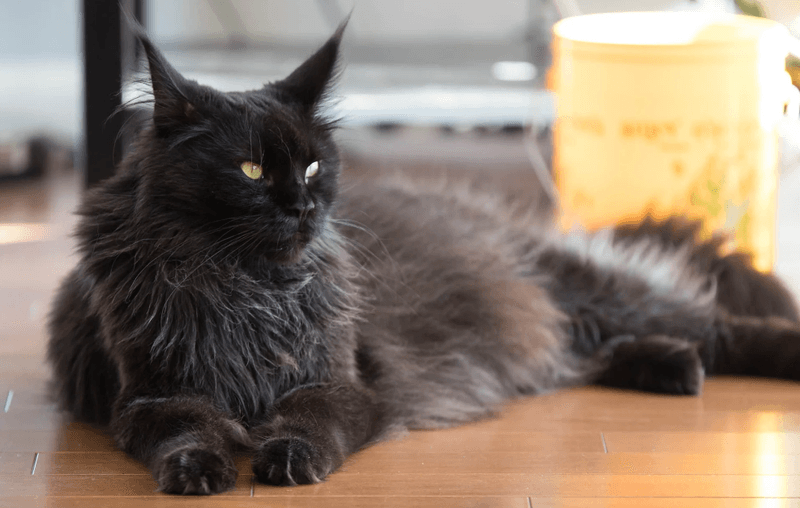
Smoke cats appear to wear a magical cloak that shifts colors before your eyes. Their fur features dark tips with lighter roots, creating an ethereal smoke effect when they move. This optical illusion happens because each hair has a white undercoat beneath a colored tip.
What makes smoke cats truly special is how dramatically they can change appearance when petting them or when they’re in motion. At rest, they might look solid-colored, but with a gentle ruffle of their fur, the lighter undercoat reveals itself like a secret identity.
Smoke patterns can appear in various colors including black, blue, and red, with black smoke being the most dramatic and coveted by cat fanciers.
2. Striking Silver Tabbies
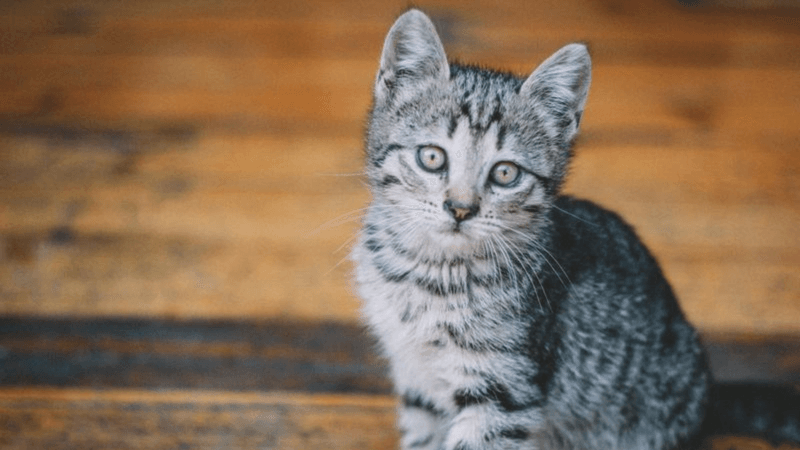
Silver tabbies sparkle like walking jewelry boxes, with their gleaming coats catching every ray of light. Unlike normal tabbies, these cats have a silver-white undercoat with black or dark gray markings creating a high-contrast pattern that seems to shimmer.
The genetic magic behind this coat involves the inhibitor gene, which removes yellow pigment from the fur. This leaves only the silver base with dark tabby markings painted on top, like an artist working on a metallic canvas.
Many cat lovers report that silver tabbies often have larger-than-life personalities to match their standout appearance – bold, playful, and impossible to ignore.
3. Chocolate Brown Beauties
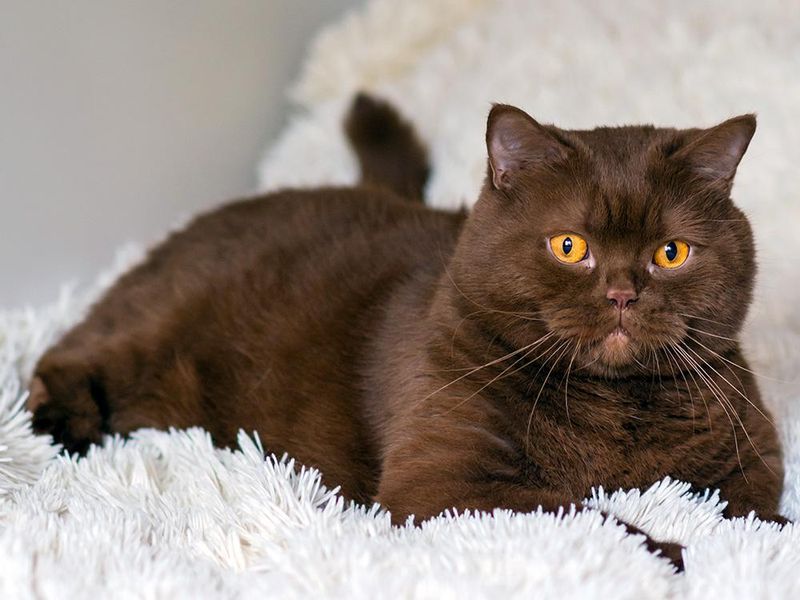
Chocolate brown cats sport a rich, warm coat color reminiscent of finest milk chocolate. This delectable hue results from a recessive gene modification of the black color gene, creating a diluted, softer brown instead of deep black. Genuine chocolate cats remain relatively scarce outside of specific breeds like Havana Browns and some Orientals.
The color appears most striking in solid form, without any patterns interrupting the smooth, velvety look. Under sunlight, these cats seem to glow with reddish-brown undertones that add depth to their coat.
Many chocolate cats have matching brown whiskers and paw pads – a charming detail that completes their sweet appearance.
4. Cinnamon: The Rarest Coat Color
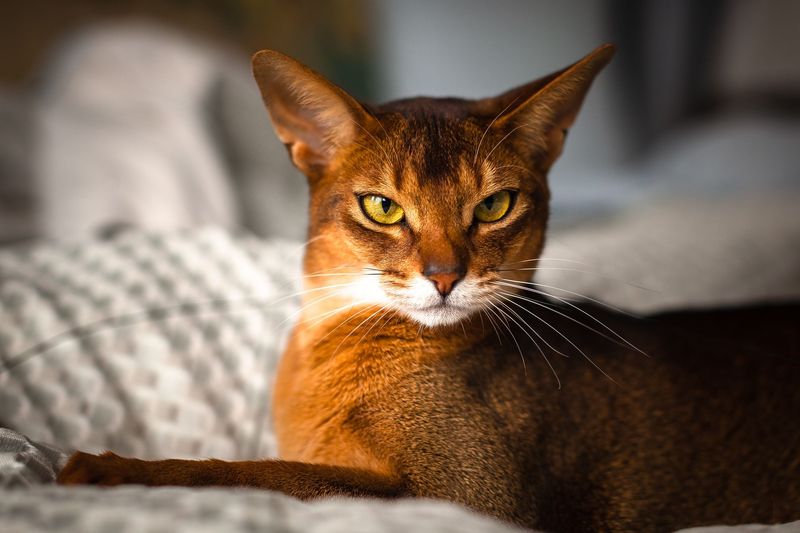
Cinnamon cats wear the rarest of all feline coat colors – a warm, reddish-brown shade that looks freshly sprinkled from a spice jar. This ultra-rare color comes from a specific gene mutation that’s even more diluted than chocolate, creating a lighter, warmer tone that’s instantly recognizable to cat experts.
First discovered in Siamese cats in the 1950s, genuine cinnamon remains exceedingly uncommon. You’ll most likely spot this spicy shade in Abyssinians, Orientals, and occasionally in mixed-breed cats through genetic luck.
The cinnamon gene also affects paw pads and nose leather, turning them a distinctive light pink-brown that perfectly complements their unique coat.
5. Fawn: The Dilute Cinnamon

Fawn cats display a delicate, pale beige coat that resembles a newborn deer’s soft fur. This extraordinarily rare color happens when a cat inherits both the cinnamon gene and the dilution gene, creating a gentle, muted shade that’s barely seen outside specialized breeding programs.
The color appears almost dusty rose in certain lights, with subtle warm undertones that shift with movement. Fawn cats often have matching light pink noses and paw pads that complete their delicate appearance.
Finding a true fawn cat outside of Oriental breeds proves challenging – they’re treasured by breeders and cat show enthusiasts as living examples of feline genetic marvels.
6. Bewitching Tortoiseshell Points
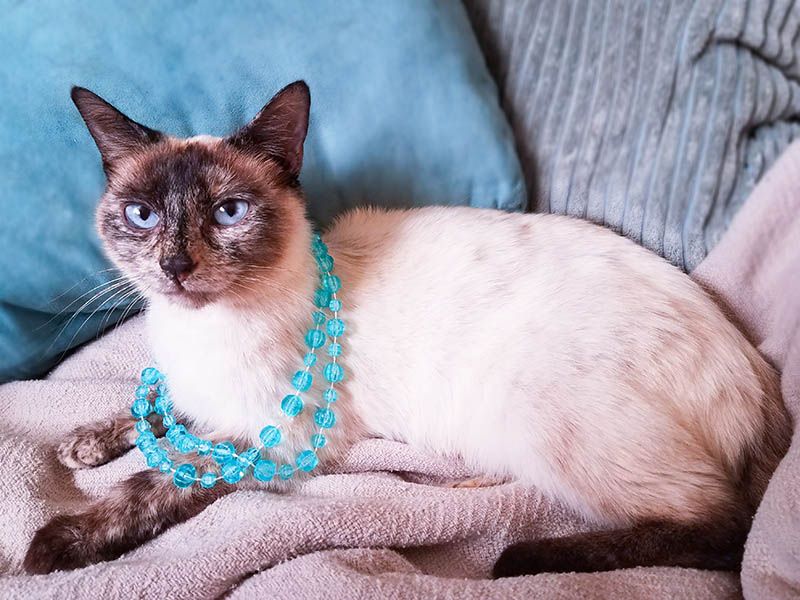
Tortoiseshell points combine two rare features – the pointed pattern of Siamese cats with the mottled magic of tortoiseshell coloring. These cats display the typical light body of pointed breeds, but instead of solid-colored extremities, their points feature a captivating blend of red and black patches.
This pattern requires multiple genetic factors to align perfectly – the cat must inherit both the gene for temperature-sensitive coloring and the tortoiseshell patterning. The result? A feline that looks like it’s wearing custom-designed accessories on its face, ears, legs and tail.
Almost exclusively female due to color genetics, these cats often develop strikingly intense blue eyes that contrast beautifully with their multicolored points.
7. Captivating Calico Tabbies

Calico tabbies (sometimes called “calibby” cats) wear two patterns simultaneously – the three-color patches of calicos plus the striking stripes and swirls of tabbies. Imagine a cat with patches of red, black, and white, but within the red and black areas, you’ll discover distinct tabby markings – stripes, swirls, or spots.
This complex pattern creates a visually rich coat that never appears exactly the same on any two cats. Like regular calicos, calibbies are almost always female due to the genetics of orange coloration in cats.
Each calibby resembles a living canvas, with nature painting multiple patterns across their fur in a display that cat geneticists find fascinating and cat lovers find irresistibly beautiful.
8. Lavender (Lilac) Dreamers
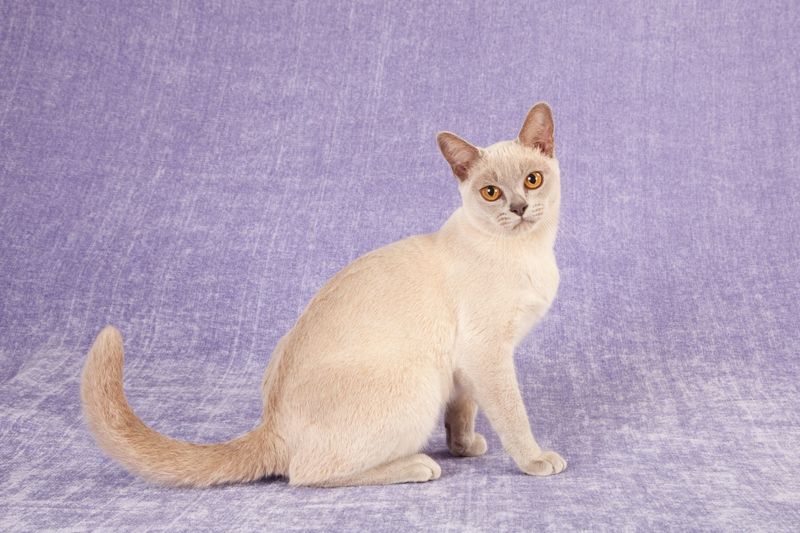
Lavender cats (also called lilac) flaunt a delicate, frost-tinged coat that appears almost pinkish-gray. This ethereal color occurs when a cat inherits both chocolate and dilution genes, creating a pastel shade that looks hand-painted by fantasy artists.
Under different lighting conditions, lavender cats shift between soft gray, pale mauve, and delicate pink tones. Their color appears most commonly in Siamese, Balinese, and Oriental breeds, though occasionally it surprises in mixed-breed kittens.
Most lavender cats come with matching lavender-pink nose leather and paw pads, completing their otherworldly appearance. Their fur typically has a luminous quality that seems to glow softly in dim lighting.
9. Rare Golden Cats

Golden cats shimmer with a warm, rich coat that looks as if they’ve been dipped in sunshine. Unlike orange or red cats, true golden cats have fur with bands of color – each hair features alternating light and warm gold pigmentation that creates extraordinary depth and radiance.
This color appears most prominently in breeds like the British Golden and some Persian lines. The golden gene creates a warm undercoat with darker tips, sometimes called “tipping,” which gives the cat a glowing aura.
What makes golden truly special is how it interacts with light – when sunbeams hit these cats, they seem to illuminate from within. Their coats often complement golden or green eyes for a coordinated look that’s simply breathtaking.
10. Stunning Silver Shaded Cats
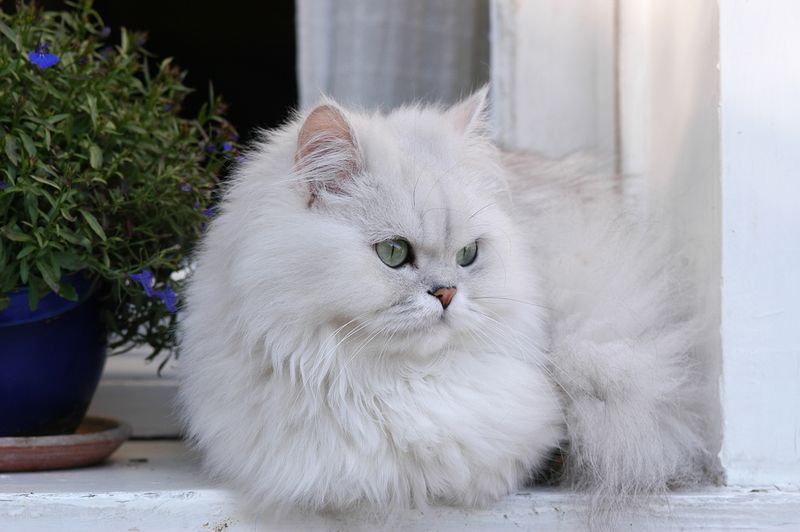
Silver shaded cats appear to have been dusted with stardust – their white undercoats peek through darker-tipped hairs to create a glistening, ethereal effect. Each hair features a white base with approximately 1/3 of the tip colored, usually in black, blue, or chocolate.
This delicate tipping creates the illusion of a silver cat wearing a translucent veil of darker color. The face, sides, and back typically show more pronounced shading, while the chest, belly, and inner legs remain lighter.
Persian cats showcase this pattern most dramatically, especially with their long, flowing coats. The contrast between light and dark elements makes these cats appear to shimmer with every movement, like living sculptures crafted from precious metals.
11. Mysterious Copper Eyes
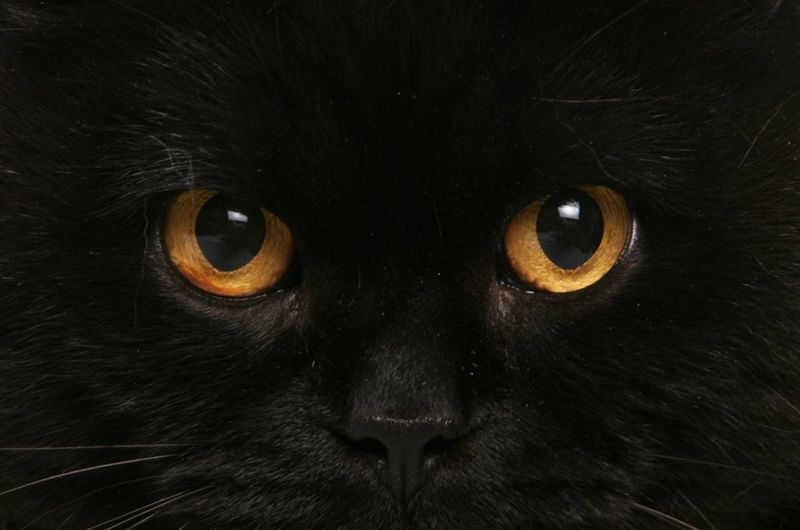
Copper-eyed cats possess orbs that glow like newly minted pennies, with a reddish-orange intensity that can stop you in your tracks. These deep, rich eyes appear most striking in black cats, creating a Halloween-worthy contrast that seems almost supernatural.
The intense pigmentation results from high concentrations of melanin in the iris. Unlike amber eyes, copper eyes have a more pronounced reddish undertone that can appear almost luminous in certain lighting conditions.
British Shorthairs, especially the blue variety, often showcase spectacular copper eyes. The contrast between their plush gray-blue coats and fiery copper gaze creates one of the most distinctive looks in the feline world.
12. Regal Odd-Eyed Cats
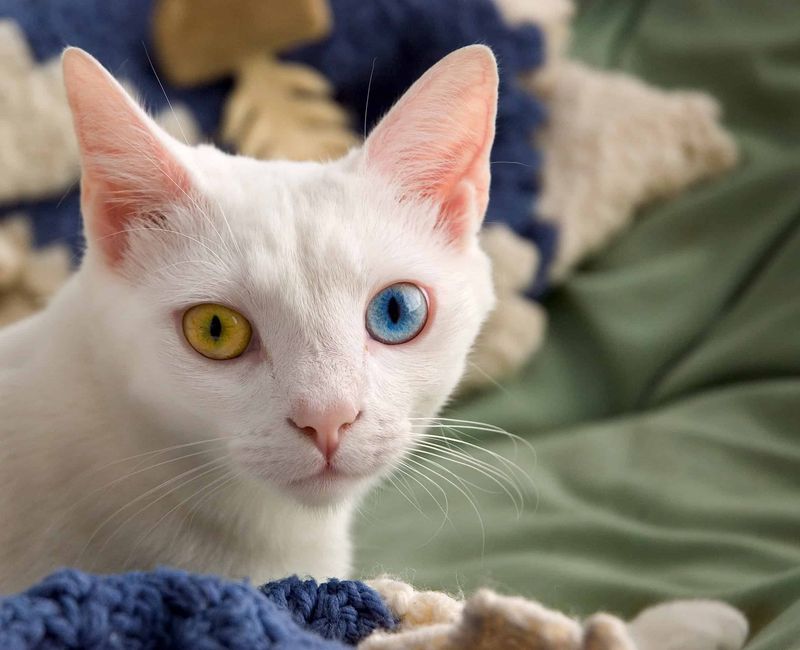
Odd-eyed cats proudly display heterochromia – one eye blue and the other copper, green, or amber. This striking feature results from a genetic quirk affecting melanin distribution during development. White cats show this trait most frequently, with the blue eye typically appearing on the same side as any patches of color.
Turkish Angoras and Turkish Vans have been treasured for centuries for this trait. In ancient Turkey, these cats were considered magical and brought good fortune to their owners.
The blue eye contains less melanin, while the other eye develops normal pigmentation. This creates a mesmerizing asymmetry that has fascinated cat lovers throughout history – even David Bowie’s distinctive eyes were often compared to odd-eyed cats!
13. Enigmatic Amber-Eyed Beauties
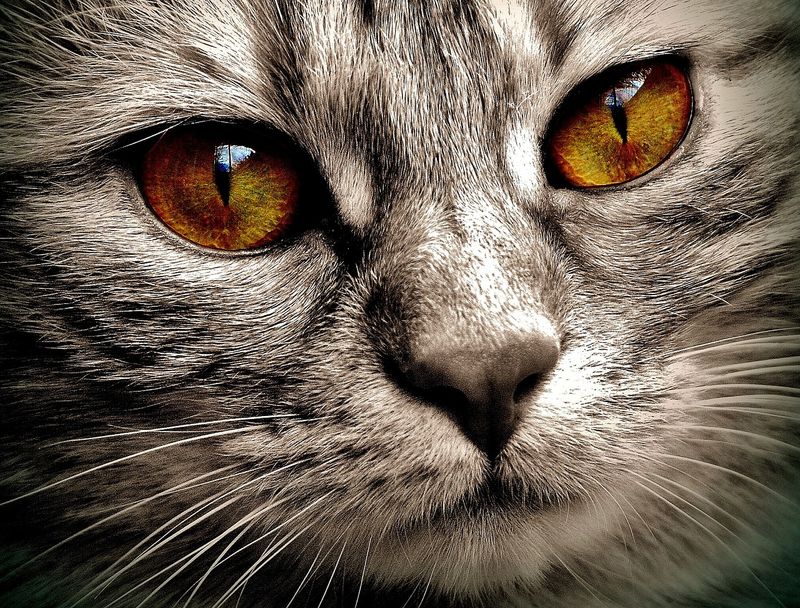
Amber eyes in cats cast a spell with their rich, honey-gold to copper-penny glow. Unlike the common yellow-green eyes of many felines, true amber eyes contain no green whatsoever – just pure, warm tones ranging from light honey to deep cognac.
This eye color develops from a specific genetic variation affecting melanin production in the iris. The pigment concentration creates that distinctive amber hue that seems to smolder from within, especially in certain lighting.
Breeds most likely to showcase these mesmerizing peepers include Norwegian Forest Cats, British Shorthairs, and some Bengals. When paired with certain coat colors like blue or chocolate, amber eyes create a striking contrast that’s impossible to ignore.
14. Enchanting Aqua Eyes
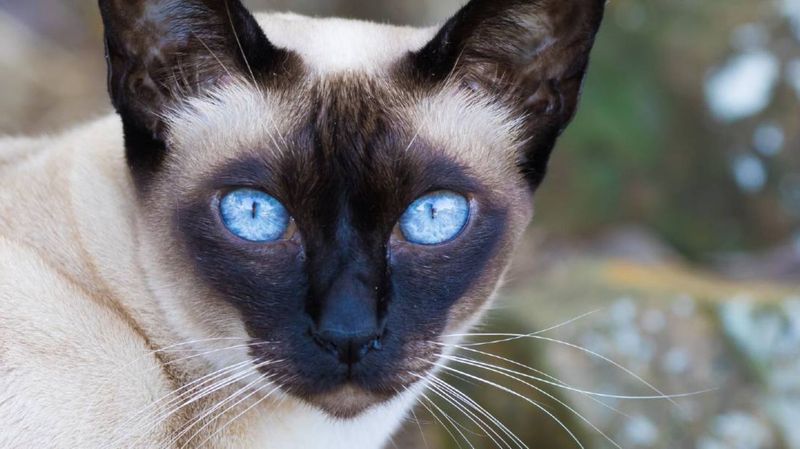
Aqua-eyed cats possess a rare eye color that falls between blue and green, creating a captivating turquoise shade reminiscent of tropical waters. This unusual eye color occurs most frequently in Tonkinese cats, which were developed by crossing Siamese (blue-eyed) with Burmese (gold-eyed) cats.
The genetics behind this eye color involve partial expression of the Siamese blue-eye gene. Unlike the intense blue of Siamese or the gold-green of many other breeds, aqua eyes have a distinctive depth and luminosity all their own.
The color can vary slightly between cats, ranging from a blue-dominant aqua to a greener seafoam shade. In certain lighting, these eyes seem to shift colors like the ocean itself.
15. Fascinating Green-Eyed Felines

True green-eyed cats flaunt a rare eye color that ranges from jade to emerald without yellow undertones. Unlike the common yellow-green eyes many cats have, pure green eyes contain minimal yellow pigment, creating a clear, vivid hue that’s relatively uncommon in the feline world.
Russian Blues showcase this eye color most famously. Their kittens actually start life with yellow-blue eyes that gradually transform to vivid green by around four months of age – a magical metamorphosis that cat owners find fascinating to witness.
The brilliant green stands out dramatically against certain coat colors, particularly gray/blue, creating a jewel-like effect. Some cat fanciers believe green-eyed cats possess extra intelligence and sensitivity.





